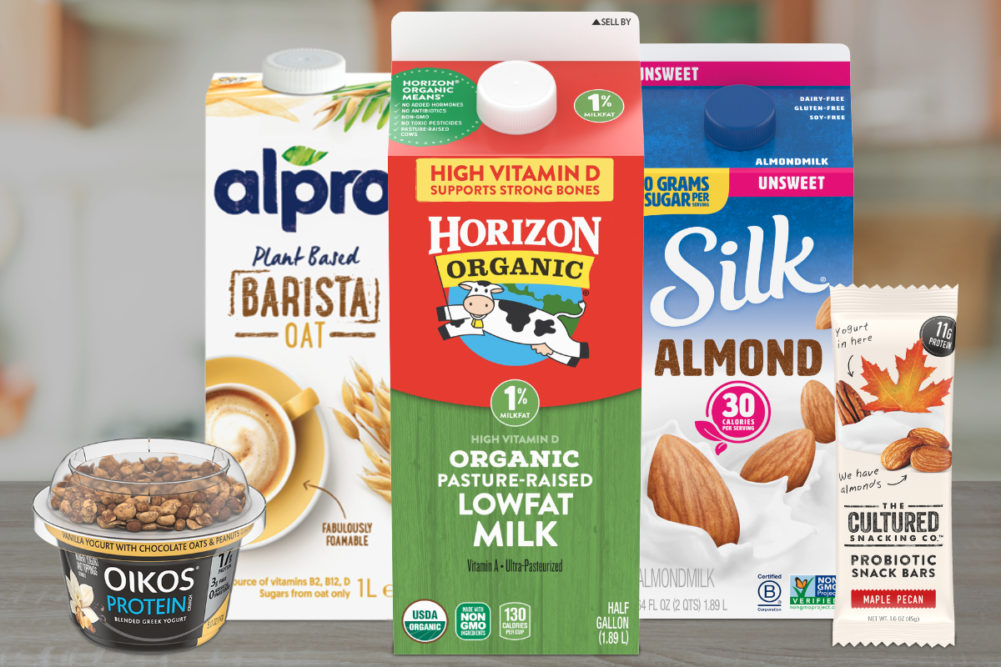PARIS – Danone SA is undergoing significant changes. Management has shifted the company’s focus from global to local, committed to reducing costs by $1.9 billion by 2023 and is in the process of redesigning its approach to procurement, innovation and manufacturing. The latter efforts will have a lasting impact that will permeate throughout the organization.
During a Nov. 23 virtual Investor Day to discuss the changes, executives with the company used phrases like “we have become too fat,” “too many layers of management,” “heavy cost structure,” and “internal complexity” to describe Danone’s current structure. The structure has led to a siloed organization with limited synergies and scale at the country level, said Véronique Penchienati-Bosetta, chief executive officer of International for Danone.
“COVID has plunged us all into an all-new world, resetting lifestyle and livelihoods …,” said Henri Bruxelles, chief operating officer of end-to-end design to delivery for Danone. “It created (a) major shift in portfolio, products and price point, and in supply chain, reshaping route to market, putting technology first with consumer and customers.
“We believe winners will be those able to reinvent themselves fast and broad to accelerate the new avenue for growth, to extract value at all steps and to find excellence in execution in the new delivery models.”
“We believe winners will be those able to reinvent themselves fast and broad..."
– Henri Bruxelles, Danone SA
As part of the reorganization, Danone is putting research and development, sourcing, procurement and manufacturing “under the same roof,” said Mr. Bruxelles. The effort has four goals, including to accelerate top-line growth through better, faster and bigger innovation; improve gross margin through efficiencies; improve the company’s supply chain; and create a single integrated team that benefits all of the company’s businesses around the world.
Mr. Bruxelles said Danone already has started using the new organizational model in its plant-based dairy- and meat-alternative businesses.
“We are stepping up the unique product, package and manufacturing knowledge of Alpro and Silk in soy, almond and oat, historically based in the US and in Belgium, into a networked plant-based center of excellence … upgrading our product design, advancing new source(s) of protein like sesame, hemp, nuts or pea, evolving coffee base and exploring new plant-based product forms with organic sourcing and deep crop and variety selection expertise …,” he said.
The company has committed to delivering €300 million ($356 million) in annual efficiencies through 2023. It will achieve its goal through stock-keeping unit (SKU) rationalization, removing costs from product development, transforming its manufacturing and supply network, and embracing data-enabled procurement.
“… We are convinced SKU pruning is a dynamic value creation exercise,” Mr. Bruxelles said.
Using the company’s Horizon Organic brand as an example, he said by decreasing the brand’s half-gallon format by 30% allowed the company to free production capacity and increase volume output by 10%.
“It allowed Horizon Organic to … grow double-digit in the period, gaining 250 bps (basis points) of market share,” Mr. Bruxelles said.
“… We are convinced SKU pruning is a dynamic value creation exercise.”
– Henri Bruxelles, Danone SA
Calling the process “eliminate to innovate,” he said the rationalization of Danone’s long-tail SKUs will unlock trapped line capacity with no capital investment.
“For 2021, we will review and cut 20% of our SKU long tail, resulting in more than 2,000 SKUs,” Mr. Bruxelles said.
Digitization will play a key role in supply chain, manufacturing and procurement improvements. Initiatives underway include shifting to digital manufacturing, using advanced forecasting programs as well as using data-enabled end-to-end planning.
“We aim to have, by 2023, 40 sites digitized,” Mr. Bruxelles said.
Improving inflation mitigation and being more efficient are two goals in procurement.
“We are putting in place several data-enabled tools for faster … supply collaboration for advanced analytics on category and contract improvement,” he said. “These allow us both to increase our outsourcing coverage from 70% to 90% of our indirect spend, but also increase our sourcing efficiency.”
Emmanuel Faber, chairman and CEO, said the goal for 2022 is for the organizational changes to return Danone to its pre-COVID margin level of approximately 15% and sales growth to be in the range of 3% to 5%.
“I consider it as the starting point of our next journey,” he said.

